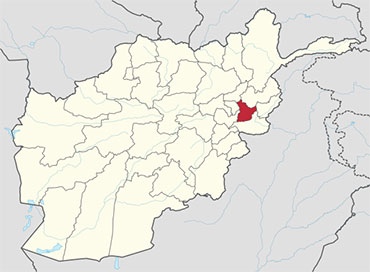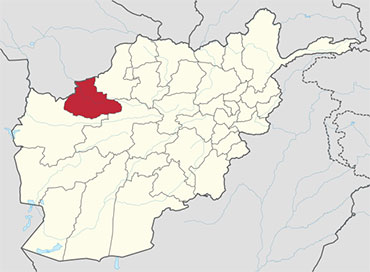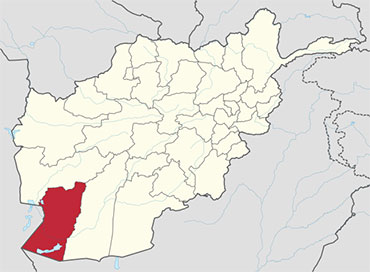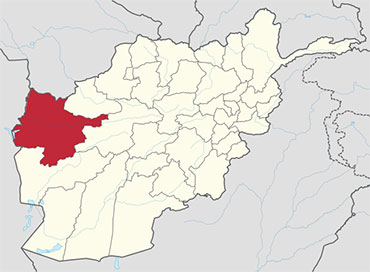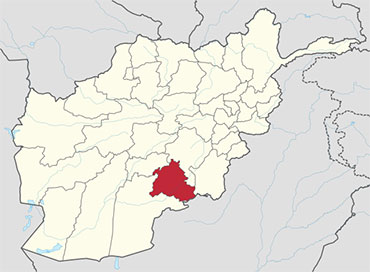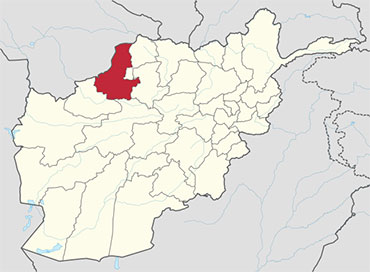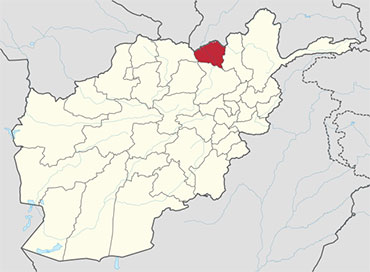 Kunduz is one of the 34 provinces of Afghanistan, located in the northern part of the country next to Tajikistan. The population of the province is around 953,800, which is multi-ethnic and mostly a tribal society.[3] The city of Kunduz serves as the capital of the province. The Kunduz Airport is located next to the provincial capital.
Kunduz is one of the 34 provinces of Afghanistan, located in the northern part of the country next to Tajikistan. The population of the province is around 953,800, which is multi-ethnic and mostly a tribal society.[3] The city of Kunduz serves as the capital of the province. The Kunduz Airport is located next to the provincial capital.
The Kunduz River valley dominates the Kunduz Province. The river flows irregularly from south to north into the Amu Darya river which forms the border between Afghanistan and Tajikistan. A newly constructed bridge crosses the Amu Darya at Sher Khan Bandar. The river, its tributaries, and derivative canals provide irrigation to the irrigated fields that dominate land usage in the agricultural province. There are also rain-fed fields and open range land that span several miles.
History
The area has been part of many empires in the past. It became part of the Afghan Durrani Empire in the mid-18th century. It saw major migration from Russian Turkestan in the north during the early 1920s. During the governance of Sher Khan Nasher, Kunduz became one of the wealthiest of Afghanistan’s provinces, mainly due to Nasher’s founding of the Spinzar Cotton Company, which continues to exist in post-war Afghanistan in the early 20th century.
Between one hundred and two-hundred thousand Tajiks and Uzbeks fled the conquest of their homeland by Russian Red Army and settled in northern Afghanistan.[4]
During the war in Afghanistan Kunduz was captured by NATO forces. In November 2001, members of the Taliban and Al-Qaeda, along with Pakistani military personnel and Afghan sympathizers were airlifted to Pakistan to evade NATO capture in the Kunduz Airlift.
Germany has 4000 soldiers stationed in the NATO-ISAF Kunduz province Provincial Reconstruction Team, along with Regional Command North. The province was largely peaceful until Taliban militants started infiltrating the area in 2009.
Economy
Agriculture and livestock husbandry are the primary occupations of the provinces residents. Fruit and vegetable are the most commonly farms items but there is also some cotton and sesame production. Farmers faced water shortages.
Men and women in Kunduz were employed in clothing production, metal working, carpentry and hide business.
The port of Shir Khan Bandar provides an international outlet for Kunduz’s goods and has allowed for importing commercial goods from Asia, Middle East, and the Persian Gulf.
Healthcare
The percentage of households with clean drinking water fell from 25% in 2005 to 16% in 2011. The percentage of births attended to by a skilled birth attendant increased from 6% in 2005 to 22% in 2011.
Demographics
The population of Kunduz province is around 953,800,[2] which is multi-ethnic and mostly a tribal society. According to the Naval Postgraduate School, the ethnic groups of the province are as follows: Tajik 33%; Uzbek 27%; Pashtun 22%; Turkmen 11%; Hazara 6%; and Pashai 1%.
Another source gives the following: Tajik 34%; Pashtun 20%; Uzbek 27%; Turkmen 9.4%; Arab 4.6%; and Hazara 3.5%; plus small groups of Pashayi, Baloch and Nuristani.
Districts
Kunduz province is divided into about 7 districts.
| District | Population | Area |
|---|---|---|
| Ali Abad | 45,851 | |
| Archi | 99,000 | |
| Chahar Dara | 69,251 | |
| Imam Sahib | 250,000 | |
| Khan Abad | 110,000 | |
| Kunduz | 259,497 | |
| Qalay-I-Zal | 120,000 |
